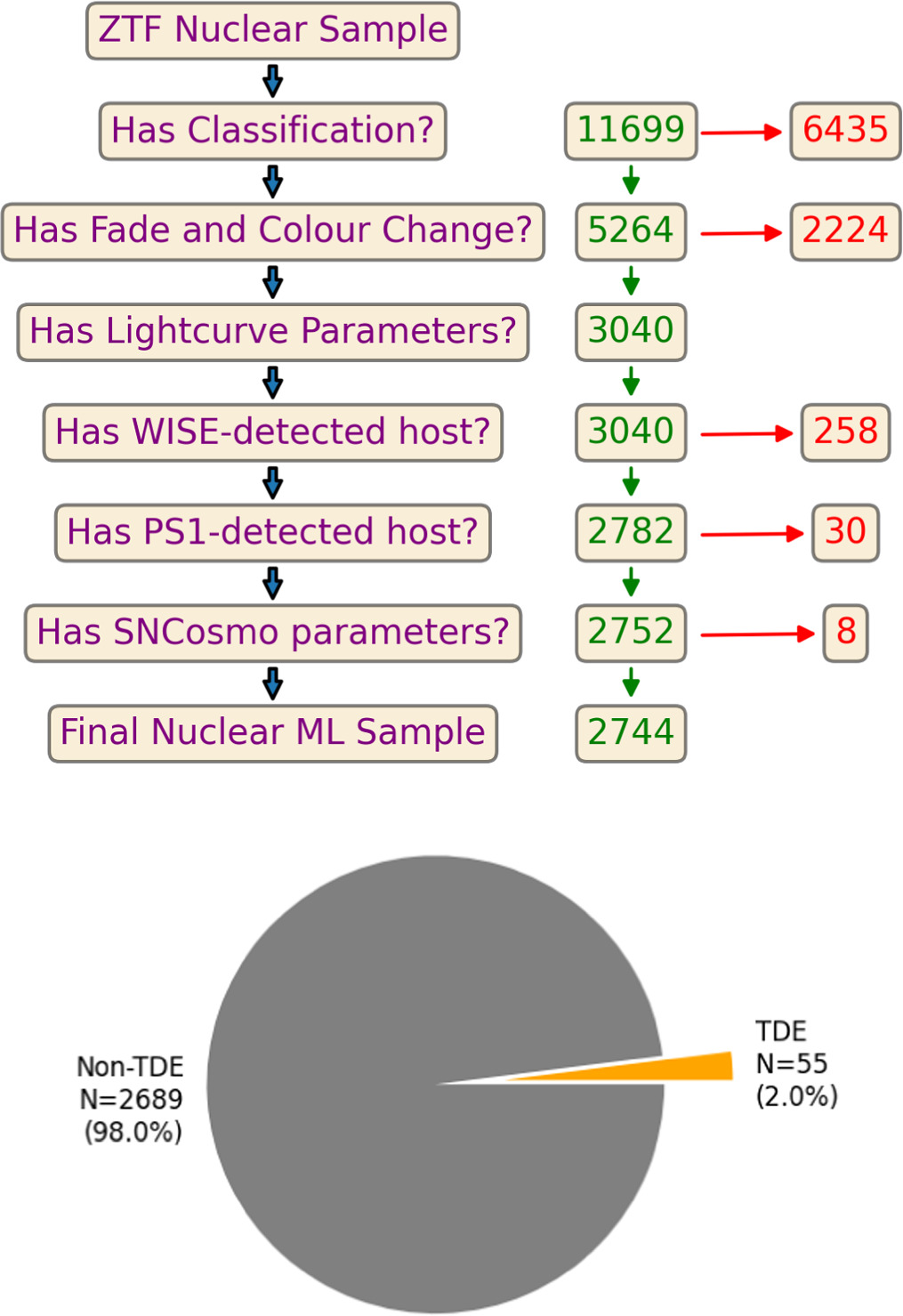Today in ApJL, I led a paper describing a new machine-learning classifier to discover Tidal Disruption Events.
TDEs are discovered in large numbers by wide-field optical surveys like the Zwicky Transient Facility (ZTF), but the process is resource-intensive requiring lots of human scanning and spectroscopic observations.
Instead, tdescore is designed to discover TDEs using only photometric data from time-domain surveys, and available contextual information from archival datasets, to discover TDEs without the need for spectroscopic follow-up.
The problem is fairly tough, because TDEs represent a tiny fraction of all nuclear transients.

Nonetheless, tdescore is able to recover TDEs with high efficiency and low contamination. Here you see that for a reasonable threshold chosen, tdescore can recover 80% of TDEs with a contamination rate of just 20%.

However, it is sometimes hard to trust the output of a classifier for science. tdescore is designed to be interpretable, so that you can understand why it made a particular decision. Here’s an example of a TDE candidate that tdescore classified as a TDE (top) and a supernova that tdescore rejected (bottom). Though both objects have similar host galaxy properties, the lightcurve properties are enough to distinguish them.
